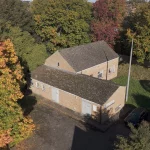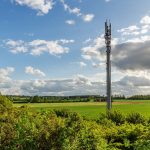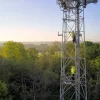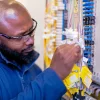Virgin Media Grow UK Fibre Network – Hints of Big Wholesale Shift UPDATE

Cable ISP Virgin Media UK (Liberty Global) has posted their latest Q3 2019 results, which reveals that their “gigabit capable” internet and TV network covered another 119,000 premises in the quarter (total of 1.9 million added since 2015) and their total broadband base now stands at 5,269,100 (up by +2.4K in Q3 vs +7.1K in Q2).
The biggest development since the last update has of course been the first launch of Virgin Media’s new DOCSIS 3.1 powered 1Gbps speed broadband in Southampton (here) and Manchester, which is due to cover all 15 million UK premises on their network by 2021 (here). Elsewhere the CEO of Liberty Global, Mike Fries, has spoken of their interest in creating a new alternative network that could serve the UK’s other 10 million premises (here) – more on this later.
On top of that VM has also made a few smaller announcements, such as to confirm the completion of their effort to upgrade the upload speeds of existing customers (here) and the signing of a new Local Full Fibre Network (LFFN) contract in Belfast (here), which should ultimately serve to connect around 200 public sector sites.
Advertisement
Finally, VM sprung somewhat of a surprise on everybody yesterday by announcing that their mobile division – Virgin Mobile – would switch its MVNO supplier from BT (EE) to Vodafone after 2021 (here). On top of that their VMB business division also struck an “extensive wholesale agreement” with Vodafone, relating to the supply of various network services.
In terms of their latest customer figures, the results are as follows.
VM UK Customer Figures (Quarterly Change)
5,269,100 Internet – (up from 5,266,700)
4,633,600 Phone / VoIP – (down from 4,641,000)
3,137,000 Mobile – (up from 3,059,000)
3,765,000 Video / TV – (down from 3,822,100)
Meanwhile today’s results reveal that the pace of their Project Lightning network expansion has decreased a little during the third quarter of 2019, which saw them add 119,000 extra premises to their UK network coverage and that’s up from 130K in the previous quarter (a total of over 1.9 million UK premises added since 2015/16).
The original aim of this project was to cover 4 million additional premises (17 million total or c.60%+ of the UK) by the end of 2020, although problems with overstated progress mean it will probably take a fair bit longer to achieve that target. We note that a new rollout deal with Avonline Networks (here) will see their build continue until at least 2023 and most of what they deploy now tends to be FTTP rather than Hybrid Fibre Coax (HFC).
Advertisement
Project Lightning Rollout Since 2017
Q3 2019 = 119,000 Premises
Q2 2019 = 130,000 Premises
Q1 2019 = 102,000 Premises
Q4 2018 = 144,000 Premises
Q3 2018 = 109,000 Premises
Q2 2018 = 118,000 Premises
Q1 2018 = 111,000 Premises (likely impacted by heavy snow)
Q4 2017 = 159,000 Premises
Q3 2017 = 147,000 Premises
Q2 2017 = 127,000 Premises
Q1 2017 = 102,000 PremisesNOTE: Q1 is traditionally a slower quarter for build due to various issues (weather, holidays etc.). The current cumulative cost per premises is c.£690 (just the build costs would be £660) and hitting 30-35% penetration after 3 years. Virgin’s UK network currently covers a total of 15,694,900 homes.
On the financial front Virgin Media reported quarterly revenue of £1,281.7m (up from £1,279.3m in the previous quarter), although the fact that they’re struggling to add new customers (growth on that front seems to be in decline) is no doubt a worry. “We reported a 3,000 customer loss and a 53,000 RGU decline in Q3, due to our disciplined approach to customer acquisition and retentions and a shift in focus to higher-value TV bundles which has contributed to lower capital expenditure,” said Virgin.
Lutz Schüler, CEO of Virgin Media, said:
“Despite a tough quarter, we continue to keep our sights set on the long-term with a goal to become the most recommended brand in our sector. This aim is driven by a relentless focus on new customer initiatives such as improved customer service, gigabit broadband and combined fixed and mobile bundles. Underpinning this is sustainable operating free cash flow growth achieved through carefully balancing ARPU, operating and capital expenditure and customer acquisition and retention.
Our investment to expand our network continues at pace and we are motoring ahead to provide gigabit broadband to half of the UK by the end of 2021 – a speed and scale unmatched by anyone else. Our superior broadband is also increasingly being paired with mobile connectivity as our fixed-mobile Oomph bundles see strong take up reflected in our highest ever quarterly mobile additions. Our fantastic new agreement with Vodafone will mean the launch of 5G services for customers in the future, further enhancing our mobile offering.
While, like everyone in the sector, there are challenges to navigate in the short-term, we have the vision, strategy and tools to strengthen our position as a competitive force in the marketplace and will continue to offer consumers the very best connectivity and TV.”
The recent Vodafone UK deal for mobile has of course reignited talk of a possible merger or asset swap between the two in the future, although in our view the next big change for Virgin Media will come from a major change to their network business.
We already know that Liberty Global’s so-called Project Hermes is proposing to imminently establish a new company in the UK that will act as an alternative network provider (Mike Fries has made no secret of his desire on this front), which could target “full fibre” build toward the 10 million rural and suburban premises missed out by Virgin Media and also offer wholesale access to other ISPs (possibly linking up with Sky Broadband etc.).
However the proposed company – Liberty Fibre (recently renamed Liberty Networks Limited) – may go much further than that. All of our sources agree that a wholesale proposition appears to be certain and products have already been devised, although by the sounds of it this might potentially extend across part or all of Virgin Media’s existing network too.
Advertisement
One big idea that is also believed to be under consideration is the possibility that the network side of Virgin Media, or at least their current FTTP base, could also be spun off to Liberty Fibre (i.e. Virgin Media becoming the anchor tenant ISP). Such a move would represent a significant shift and give Openreach (BT) a major competitor, which could radically change the market and require Ofcom to review their current regulatory approach.
We had expected to be reporting on the wholesale development by now, although it’s likely that the recently called General Election and associated uncertainty about future UK investment in “full fibre” (the Prime Minister has pledged £5bn to help the final 20% of the UK access “gigabit-capable” broadband by the end of 2025) may have put a pause on this. A wise company will wait to see what happens.
A spokesperson for Liberty Global predictably told ISPreview.co.uk, when asked about all of this, that “we don’t comment on rumours and speculation.” A little ironic since much of this started when Mike Fries went public a few months ago with his idea of establishing a second fibre company in the UK to target the bits that Virgin missed.
UPDATE 8th November 2019
It’s worth pointing out that Mike Fries, CEO of Liberty Global, said after the results announcement that they have NOT discussed “wholesale access of the end-to-end network from a fixed retail point of view” with Vodafone. However he did give an update on their wider position with respect to Liberty Networks, which largely echoes what we already know.
Mike Fries, CEO of Liberty Global, said:
“As you point out, there are 7 million to 10 million homes that are – we could possibly go out and build more quickly and potentially more efficiently. And while we’re pleased with Lightning at the 400,000 to 500,000 home a year clip, we are unlikely to do that through Lightning on balance sheet and impacting our free cash flow and taking a fair amount of capital to do so. So I don’t anticipate that you’ll see Lightning on steroids, where we take the current team (at least not in its present structure) and ask them to double or triple the amount of activity they’re undertaking.
We are exploring, as I said a few times now, how to do that perhaps in an off-balance sheet manner, potentially with partners, that would have two or three benefits. Number 1, outside capital. Number 2, two teams working, if you will, if it makes sense. And three, the ability to potentially keep it off-balance sheet and to finance and value it separately. Now those are a lot of requests and asks on our part. And I’m not suggesting here that they’re all going to happen or any of them are going to happen. But when you read press reports that we might be looking at this or we might be looking at that, it shouldn’t surprise you.
Nobody is achieving what we’re achieving in that marketplace when it comes to gigabit-speed networks and rollout of new network. So for us to not be part of that conversation when fully 95% of the country is on copper, is insane. There’s no reason why we shouldn’t be looking at it because we’ve proven we could build faster, build more efficiently and penetrate markets with new build better than anyone else in the footprint. But we have to balance that ambition with our desire to ensure that we’re generating profitable growth in our core business, that we’re delivering, as we promised, greater and greater operating free cash flow and free cash flow. So we’re trying to juggle those objectives. But I think they’re achievable, and we want you to stay tuned.
It might be complex. But I think in the end, we should be able to make it clear if it’s something we choose to do. If we don’t do it, remember, there’s no reason why the Virgin brand couldn’t be marketed elsewhere in the country where we don’t have network, and we’ve obviously looked at that. If we can assemble the rights, certainly, everybody, we have a nationwide mobile platform. Certainly, everybody in the country knows Virgin, whether you can get it or not. So expect us to try to drive scale in that market. I’m not saying we’re sub-scale, but our objective should be to drive scale with our brand and with networks, owned or leased.”
Mark is a professional technology writer, IT consultant and computer engineer from Dorset (England), he also founded ISPreview in 1999 and enjoys analysing the latest telecoms and broadband developments. Find me on X (Twitter), Mastodon, Facebook, BlueSky, Threads.net and Linkedin.
« Zen Internet UK ISP Drops Small Business Broadband Prices





















































Comments are closed